Why Big Trucks and SUVs Are More Likely to Kill You in a Crash
For years, we’ve known that large trucks, SUVs, and vans are more likely to cause fatalities. But, the reasons might surprise you.
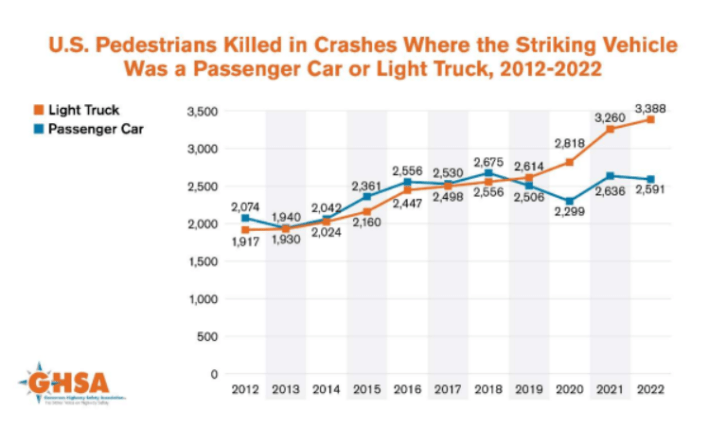
In the last few decades, the U.S. vehicle market has seen a huge shift toward “light trucks,” accounting for 75% of vehicles produced today, a stark rise from 20% in 1975. Beyond the shift in types of vehicles, cars themselves have grown – increasing in height by eight inches, in length by ten inches and in weight by a significant 1,000 pounds over the last 30 years. This is a direct result of drivers trying to get ahead in what could be called the “SUV arms race.”

Experts say that the extra size and weight have led to the increased deaths of pedestrians. But figuring out why these large vehicles are so dangerous has taken a lot of research. Here are six key reasons:
- Height and Weight:
It’s a simple fact: heavier vehicles are more likely to cause harm in a crash because they have more force. A taller vehicle is also more dangerous to vulnerable road users because they are more likely to impact the body’s internal organs. As vehicles add heavy electric batteries, these problems will only get worse.
Studies show a pedestrian is 70% more likely to die if the vehicle in a crash is a pickup truck, as opposed to a car. The likelihood of death doubles if the vehicle is a large SUV.
- Hood Shape:
Even if a car is tall, pedestrians tend to have a better outcome in a crash if the hood is designed to push the person up onto the windshield. But the flat, aggressive front ends of many SUVs and trucks push pedestrians down to the ground, increasing the risk of a second, lethal impact.
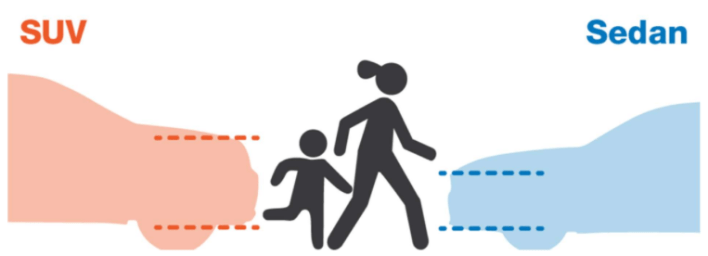
One study found that vehicles with blunt, vertical profiles were 26% more likely to cause pedestrian fatalities.
- Huge Blind Zones:
A tall car with a large, flat hood make it difficult to see directly in front. Some of the largest blind spots are located behind the “a-pillars,” or the vertical supports of the windshield. These pillars have grown in size as cars have become heavier. The growth of bigger side mirrors has also created sizable blind spots, especially for pedestrians and cyclists.
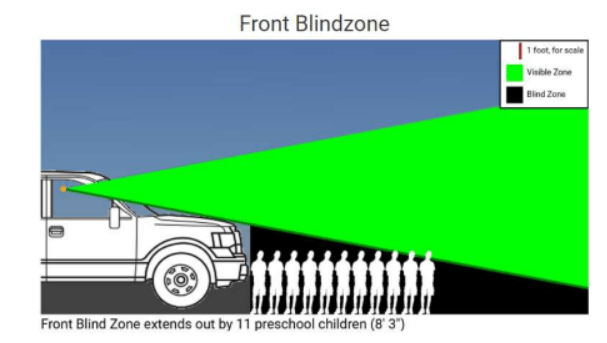
The report noted that 75% of “frontover” crashes involve SUVs, vans, or trucks, and that children are disproportionately likely to be killed. Currently, there is no required US standard for forward vision from the driver’s seat unlike in 50 other countries.
- Crash Incompatibility:
Large size differences on the road contribute to fatalities, even when both vehicles are designed to protect their occupants. Side-impact collisions involving light trucks often cause serious head and upper thorax injuries in smaller vehicles. Head-on crashes cause the big car to force the instrument panel or steering column into the smaller car’s occupant, which can lead to serious head and neck injuries.
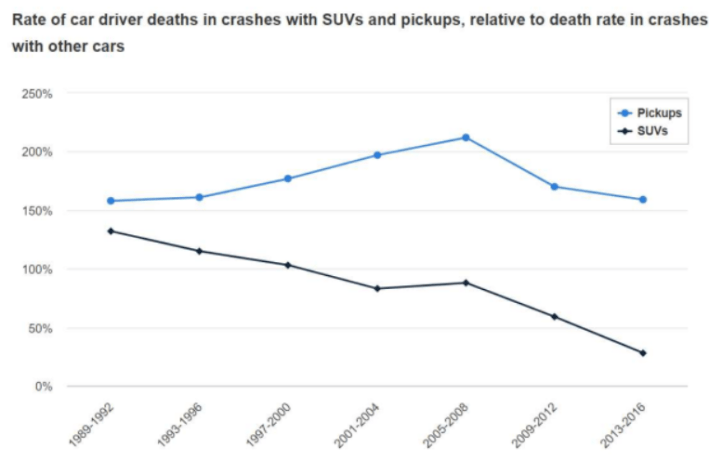
Fear can be a factor in this crash. Many Americans buy bigger cars to feel safer, even if it endangers others. According to research, those in smaller vehicles may be at more risk of injury or death, and then buy bigger vehicles for themselves.
- Frame Stiffness:
SUVs, electric vehicles, and many pickups have stiff frames. The frame’s rigidity reduces the amount of energy a big car absorbs in a crash, increasing damage to anything it hits.
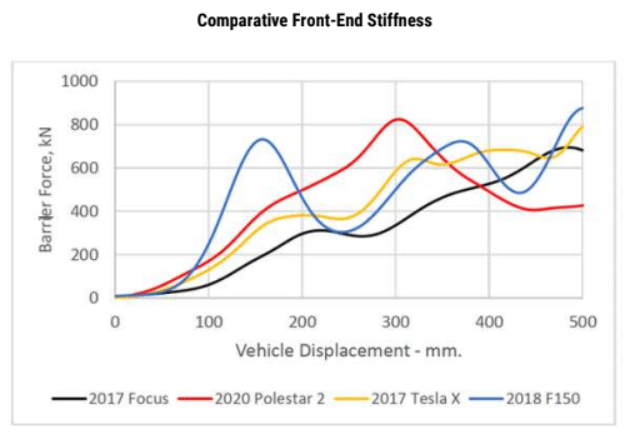
In slower crashes, those in megacars can still be injured, too. They can be exposed to higher forces than in cars with less stiff front ends.
- Drivers Speed More:
Vehicle design influences speed. One study shows a direct link between seat height and a distorted view of speed. Because of the higher driving position, SUV drivers may drive four miles per hour faster. Sometimes the difference in speed perception can go as high as 10 mph.
Acceleration is also a factor. With an average of 85% increase of new vehicles’ horsepower, the ability of many vehicles to accelerate increased.
There is no real need for ultra-fast acceleration in regular use. The large battery required in already-heavy electric vehicles means a greater weight, longer stopping time, and greater force in a crash.


